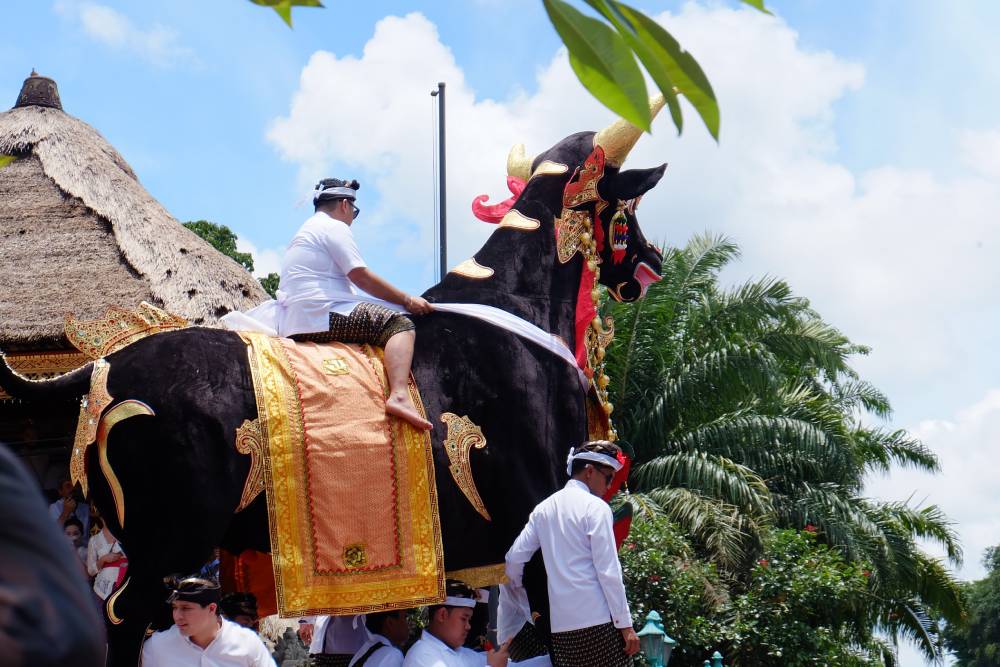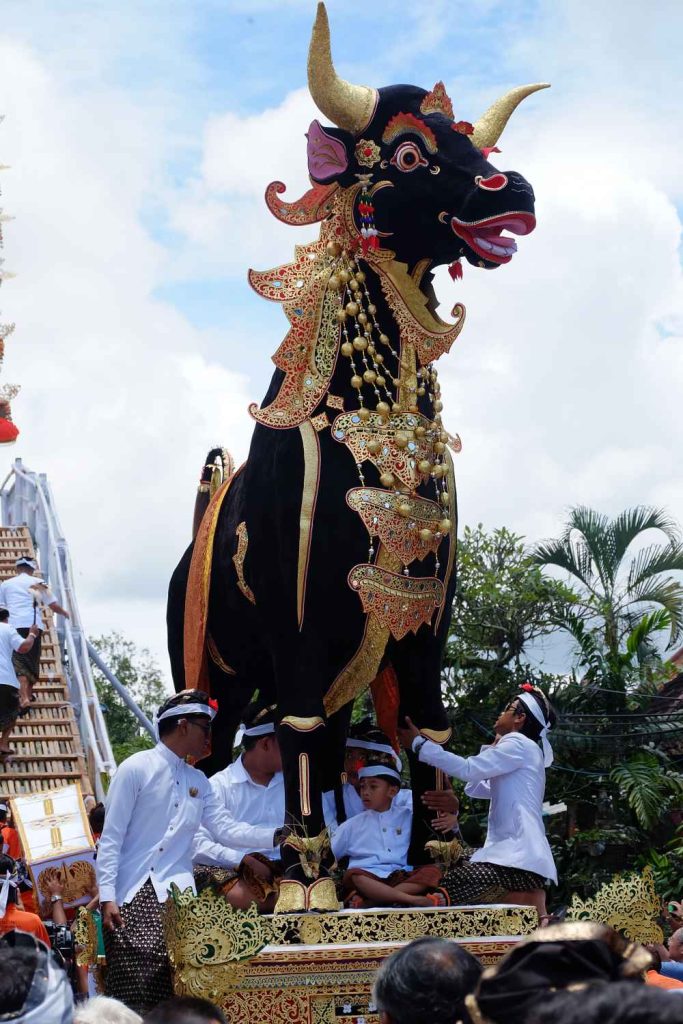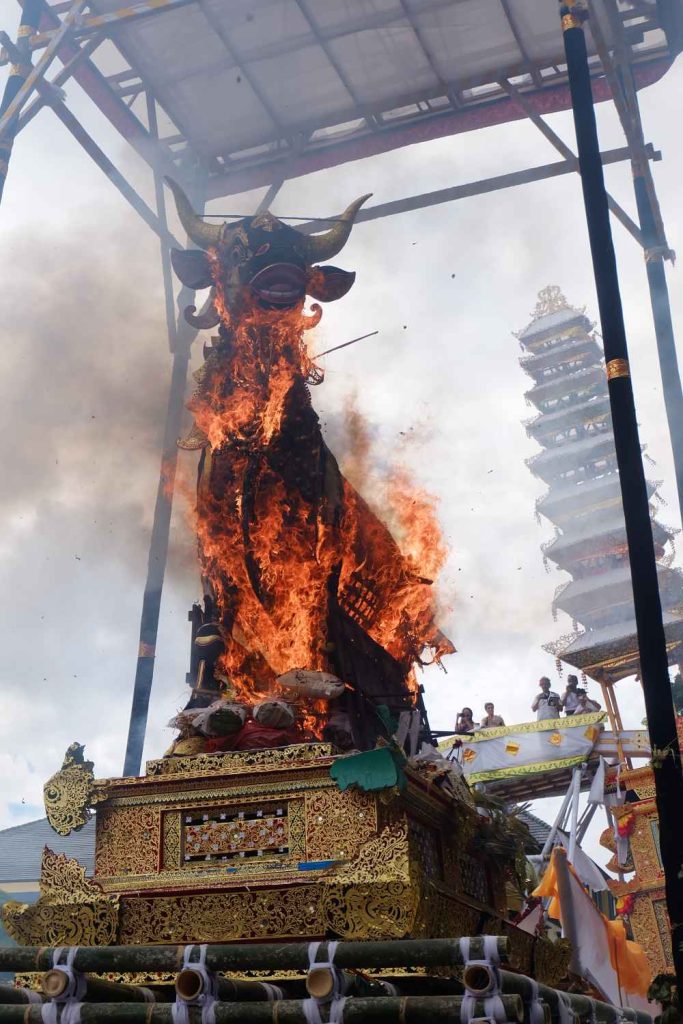
If one is lucky enough to witness a Balinese cremation, especially that of a high caste, one will see the impressive animal-shaped sarcophagi that are used as ‘vessels’ in this ever-important death rite. Most common used is the lembu bull sarcophagus.
For the Balinese Hindu, the journey of the soul is of utmost importance. Through life, death and thereafter, the soul moves through the cycles of reincarnation, samsara, and much of ritual life is dedicated to its smooth passage through certain milestones.
As such, the Balinese cremation ceremony is certainly a highlight on the soul’s ritual calendar. Known as ngaben for ‘lower caste’, or pelebon for higher castes, the cremation is the ‘climax’ in a series of death rites. The death rites, include ceremonies before and after the cremation and are necessary to release the soul, or atman, from its worldly shell (i.e. one’s body) and send it successfully to heaven where it will await reincarnation.
An important element of a Balinese cremation is a sarcophagus. Unlike those of Ancient Egypt, these are temporary vessels, not made to preserve the body but rather accompany it as the body is burned.


The most common sarcophagus one will see is that of the lembu, meaning bull or cow. The lembu is the vehicle of Siwa; as the ’destroyer’, Siwa symbolises death and the recycling of spirit. As the most prestigious sarcophagi shape, the lembu is normally reserved for high caste cremations. There are other animal sarcophagi, like the deer or lion, but the rule is that it must be a four-legged animal to represent the kanda empat, the ‘four siblings’ that we are born into this life with.
These giant effigies are normally made of wood, and can be really large (2,5 metres long, 1,5 metres wide). The bull is decorated with mirrors and gold fabric, then placed upon a bamboo or wooden platform so that it can be carried by a group.
During the cremation, the body is carried separately in the bade. During the procession to the cremation grounds, a member of family rides atop the bull as it is carried. At the grounds, located next to the Pura Dalem temple (death temple), the body is taken from the bade and placed into the sarcophagus. Then, both the sarcophagus and body are burned together, releasing the soul from its worldly vessel.






